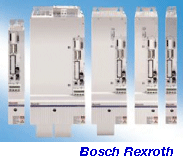What's Driving Your Operation
- Published: July 31, 2005, By Nsenga Byrd Thompson, Associate Editor
Poduct Focus
Performance, safety, and user-friendly are just a few of the buzzwords coming up in conversations about today’s drive controls. According to Michael Vallier, product line manager at ABB (abb.com), there are five key factors to consider: 1) Installation environment, including the environment the drives need to operate in; 2) Interface requirements (What other product or products does the drive need to interface with?); 3) Performance (Are all the features built into the drive fully capable of meeting the motor-operation requirements, or will extra features, such as application-specific software, be needed?); 4) Scope/breadth of vendor product offering (Are all the capabilities needed built into the plug-and-play drive you are purchasing, or will extra options be required?); and 5) Reliability.
Charles Manning, product marketing manager, mechatronics, at Omron Electronics (omron.com) recommends staying focused on the reliability and performance of the drive control product. “Lots of companies offer drives, but not all are created equally. Take the time to investigate the reputation of the products and the companies that you want to work with,” Manning says. “Choose a drive solution that can interface with the other devices in your machine. The drive is certainly an important component of the automation solution, but it is one of many that must work together directly or indirectly.”
Manning also explains that cost of ownership must be reviewed. “Don’t stop at the purchase price. The most valuable solution is not always the least expensive. Pay attention to purchase price, but also consider installation costs, maintenance costs, product reliability, and interconnectivity.”
An open architecture also should be a key consideration for any electronics purchase, urges Jim Hulman, business development at Bosch Rexroth USA (boschrexroth.com). “Serial Real-Time Communication System (SERCOS) is the worldwide communication standard for drives and motion control. Be careful, some significant companies support the physical layer of SERCOS but still use proprietary communication. Be sure to insist your drives are SERCOS compliant.”
Looking at the changes that have pushed drive control products into the 21st century, user interfaces definitely top the list. “Drives are able to respond to, and leverage, the intuition that operators already have from operating all kinds of microprocessor-driven electronics,” notes Vallier. “Diagnostics are much easier now, as well. Via the interface/keypad, users can push a HELP button, and the drive is able to diagnose what happened.”
Improvements in safety also have made a significant impact, Hulman explains. “Safe PLCs have been developed to monitor and react to unsafe machine conditions. Up to now, commands were sent to standard drives that did not have redundant processors and I/O to follow this safe condition all the way to safe machine motion.Today, drives with Safety on Board [technology], designed to the EN 954-1 Category 3 standard, now are a requirement in Europe.” Many US OEMs are implementing Safety on Board technology on their new machine designs. It reduces work-related injuries, safe-guarding movement on the machine with motion control and providing faster error recovery.”
As for future developments, Vallier comments, “There will be more and more enhancements to user interfaces and system identification for auto configuration. That means users unbox a new drive, install it, and at start up, the drive is able to identify the motor and parameters it operates at—and then automatically configure itself for operation.”
Manning believes smart drives will grow in popularity. “I expect the Ethernet trend to continue, with smart devices sending status and maintenance e-mails to operators and technicians.”
Like many in the converting industry, Manning also is keeping his eyes on China for the next wave of drive technology. “I predict that the growing industry in China will uncover a usage or technology breakthrough that has not been found before in industrial countries that have been using drive technology for many years.”
So what’s driving your operation? If it includes today’s new capabilities in drives, you’re definitely riding in the driver’s seat.

For this and other drive control new products, see our August What's New new products page.
Restrictions of time and space limit the number of companies, products, and trends that we can discuss in these reports. For additional information, see PFFC’s features and departments each month, consult the June Buyers Guide, and search our online archives.




